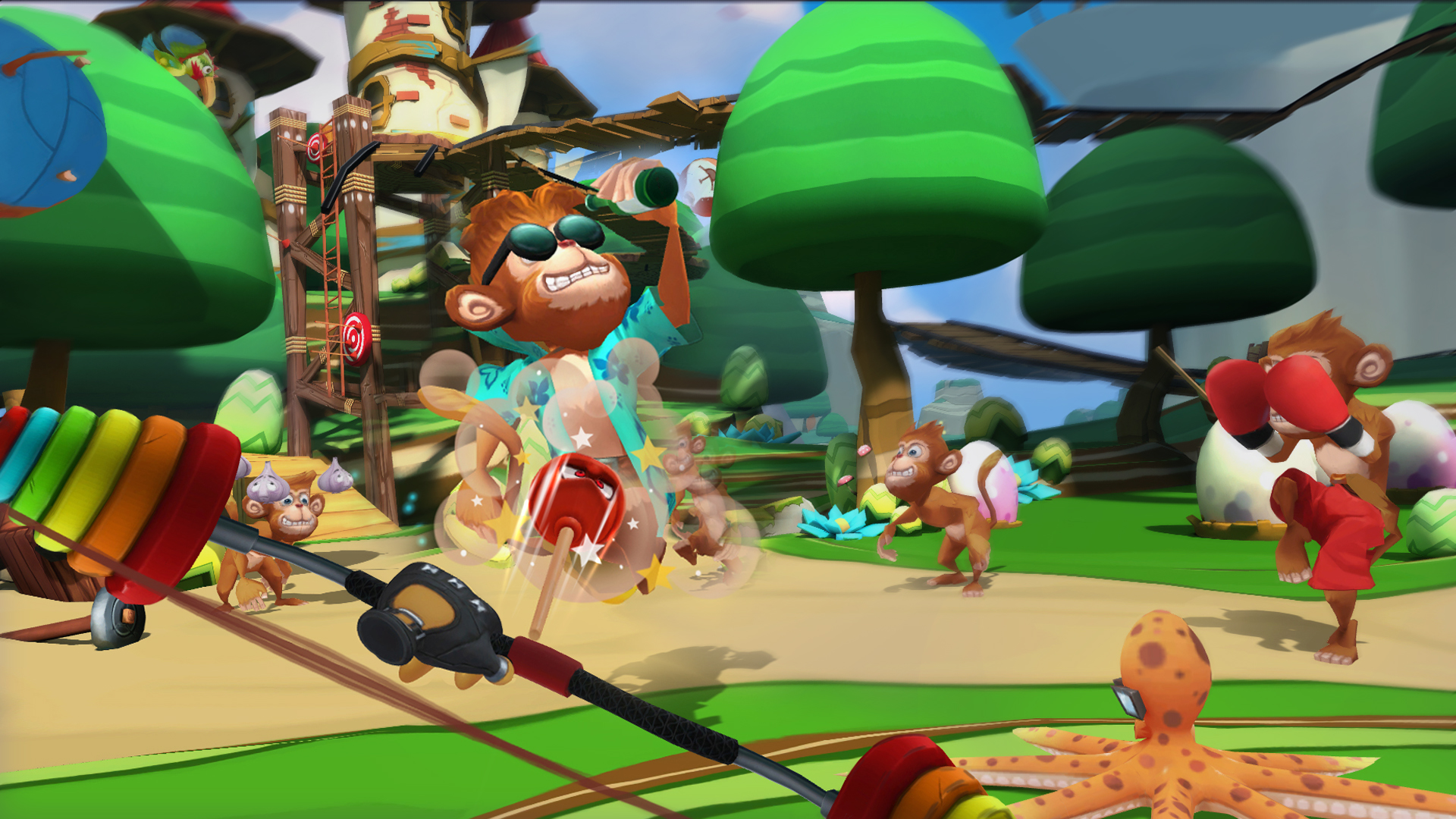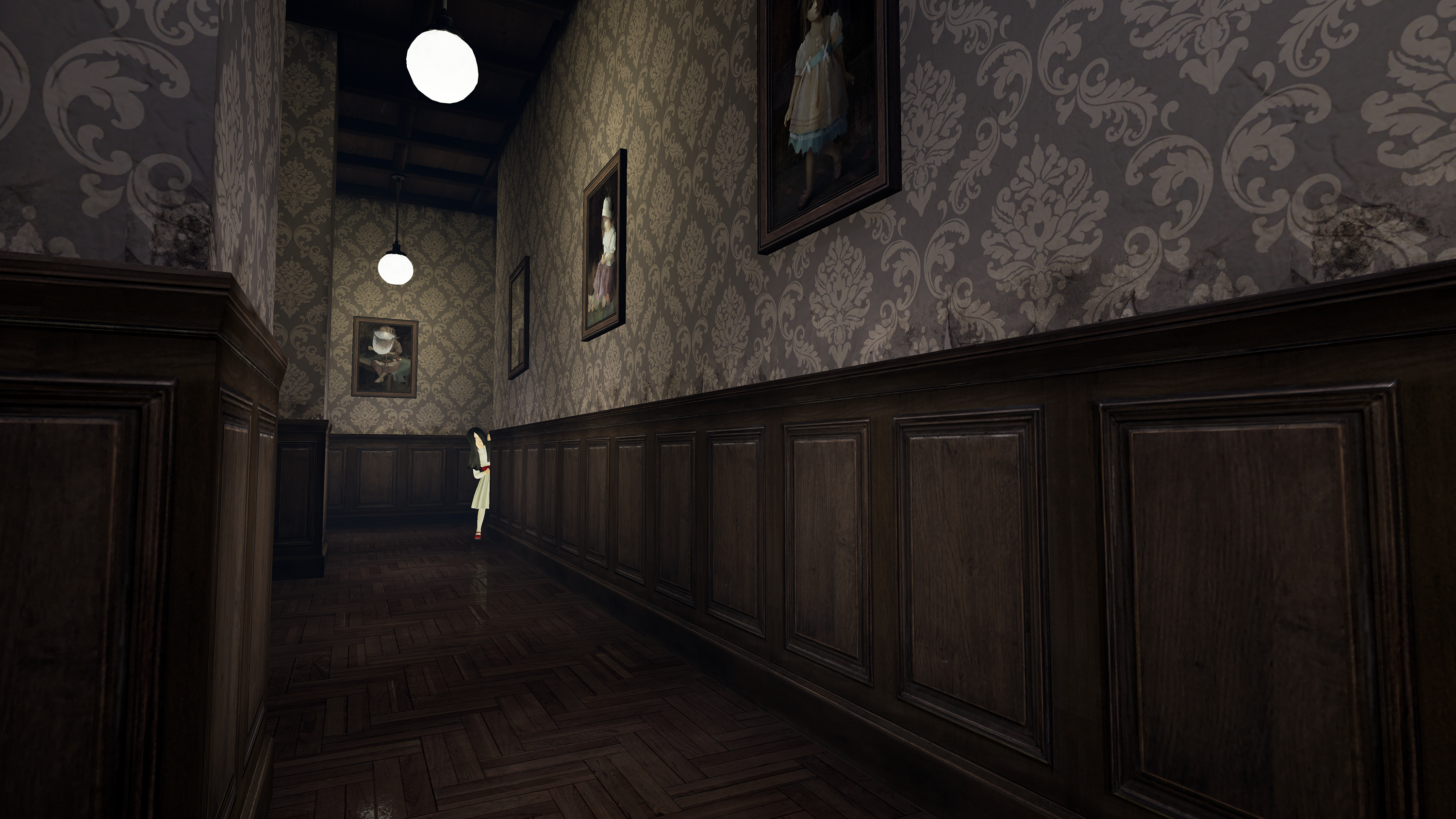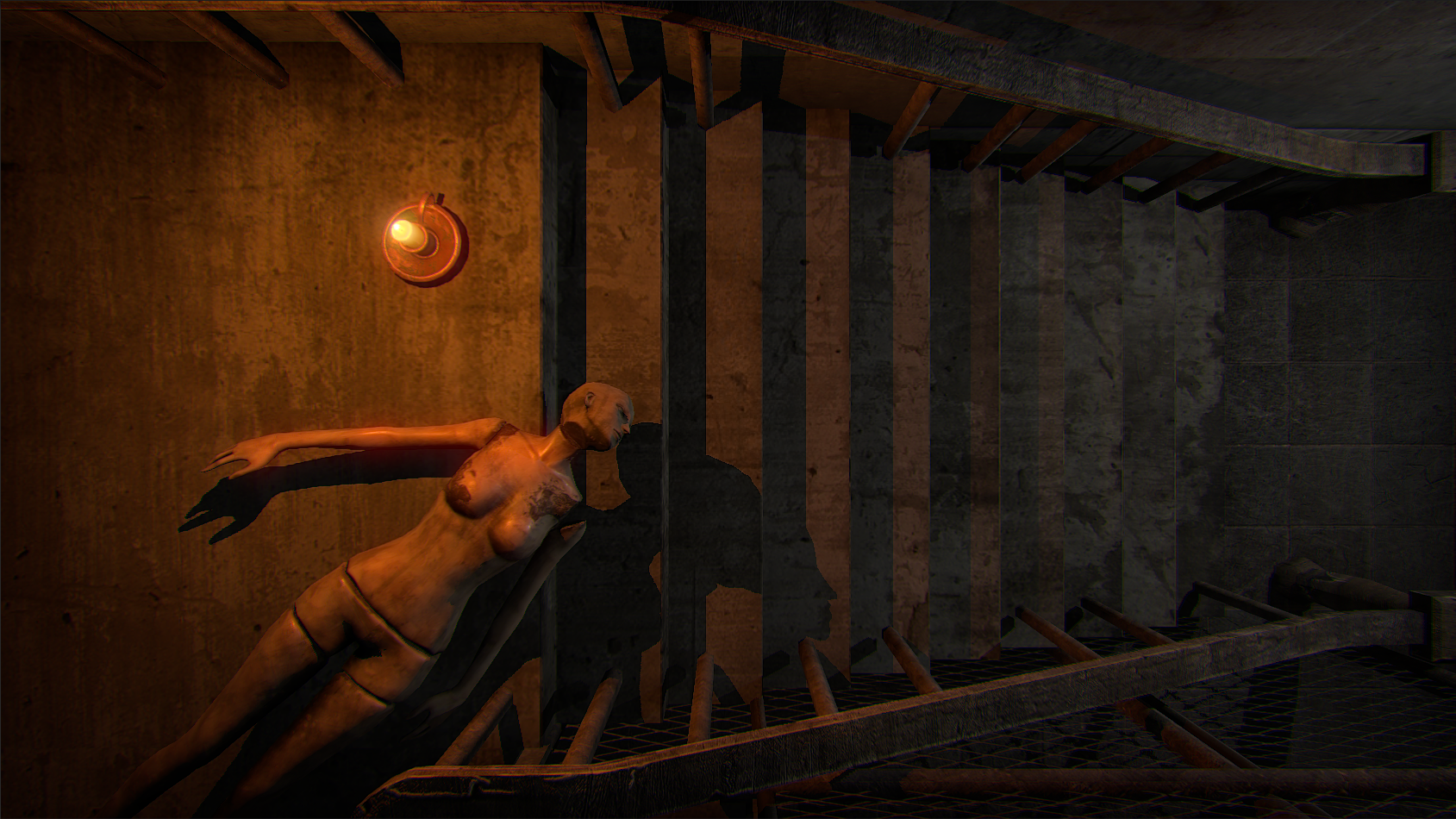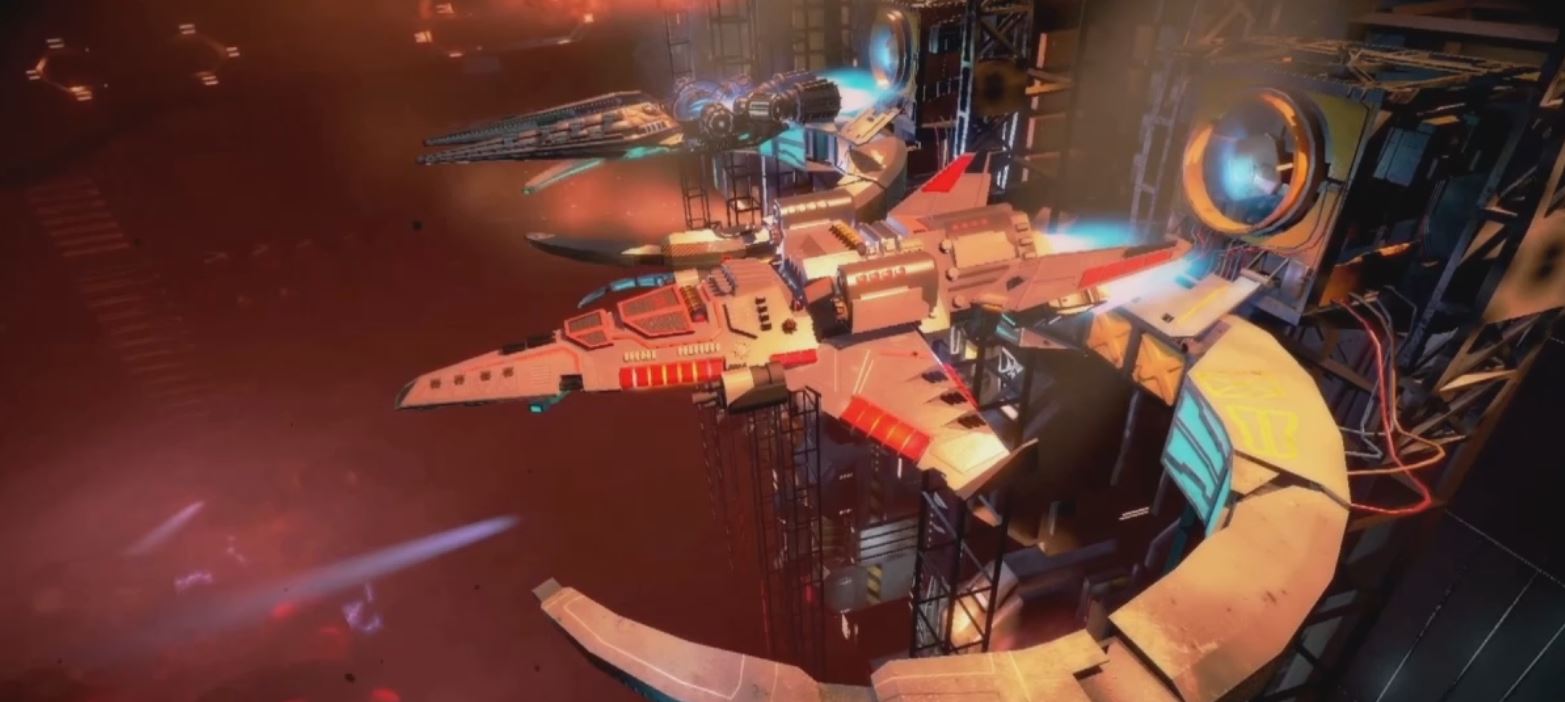When asked what Oasis Games is bringing to the PlayStation VR space, head of business development Martho Ghariani laughs and says “A lot of games.” Indeed, Oasis—a publishing partner of Sony Computer Entertainment in China—is touting “the largest PlayStation VR launch lineup,” with five different titles expected to land between the hardware’s release on October 13th and early next year.
We recently donned the headset and got some behind-closed-doors time with four of the games, Ace Banana, Pixel Gear, Weeping Doll, and Dying Reborn. While we only got a taste of each title from behind the goggles, we came away overall impressed with the quartet’s varied experiences, pick-up-and-play accessibility, and clever use of the tech.
Pixel Gear
First up, we were dropped into Pixel Gear, a fixed-position shooter that saw us using a PlayStation Move controller like a rapid-fire pistol. Utilizing the gun’s laser sights, we picked off a variety of cartoony creeps, from ghosts and bats to skeletons and walking suits of armor. As the enemy waves increased, so too did the difficulty with more baddies, and different types—like bazooka-blasting behemoths—coming at us from all sides.
Thankfully, we also had some tricks up our sleeve. Pumpkin bombs, shot from flying enemies, did plenty of damage on the threats below, while a time-slowing regenerative power-up allowed us to shoot targets like fish in a barrel. We didn’t get to test out the entire arsenal, but apparently better weapons, such as machine guns, can be earned by spending the currency you collect in-game. Exploding barrels, angels—which you’re penalized for capping—and end-stage bosses inject additional variety.
We had a literal blast in the arcade-y, horror-themed shooter, but it was its charming art design we were most taken by. Sporting a visual style reminiscent of a slightly more polished and refined Minecraft, Pixel Gear features blocky enemies, vibrant colors, and a haunted castle that looks as though is was built from LEGO bricks. The final game will feature three stages—with 10 or so enemy waves and a boss encounter each—when it creeps onto PSVR on October 20th. Beyond launch, though, Ghariani teased more stages, and possibly co-op and PvP modes, delivered via DLC.
Ace Banana
While Pixel Gear‘s colorful, Halloween-themed vibe felt appropriate for family VR sessions, Ace Banana seemed to skew even younger. Assuming the role of a “banana archer that shoots a mean arrow,” according to Ghariani, players use a pair of Move controllers to mimic drawing a bow. Pulling the right controller back from the left peripheral, creates tension that’s intuitively reflected in the game.
During our demo, we repeatedly unleashed arrows—well, toilet plungers, actually—on hordes of cute monkeys that were determined to steal the banana stash at our feet. The sneaky primates came in various shapes and sizes, from clown monkeys that took two shots to stop to cute babies that disarmed us with their adorableness before swiping our bananas.
Other types included construction worker monkeys, hacker monkeys, and those equipped with jet-packs. As the waves got more challenging, the furry foes also spawned from different areas of the vertical stage. The player’s ability to teleport to different points and pick up ammo power-ups, such as exploding fish arrows, however, helped even the odds.
The game’s single stage sports a kid-friendly vibe and a color palette that could make a rainbow look boring. As we quickly learned, though, being distracted by the eye-popping presentation for too long leads to a dwindling banana stash. Of course, even the most focused players might have a hard time protecting their prized produce from the screen-consuming, mech-controlling monkey that brought our demo to a close.
Ace Banana will include one stage with a half dozen bosses when it hits on October 13th. Ghariani also promised 4-player co-op support coming sometime after launch.
Weeping Doll
Described by Ghariani as an experience that “harkens back to games like Myst and old adventure games,” the horror-themed Weeping Doll puts players in the shoes of a maid exploring an eerie Japanese mansion. On the search for a missing girl, the protagonist must navigate the spooky estate while collecting clues, solving puzzles, and chasing a creepy kid that occasionally peeks around corners.
Weeping Doll‘s intuitive control scheme allows for an incredible amount of freedom around its labyrinthine environment; using the left stick on the DualShock, players can accurately position a ghost-like version of the avatar, before spawning her to that point with the touch of a button. Left and right camera-panning—controlled with the bumpers—afford additional navigation.
We never caught up with the mysterious tyke or found the missing girl, but we did encounter a few puzzles. The first, appropriately enough, had us matching doll bodies to their decapitated heads, while another had us setting a grandfather clock to the time shown in a painting. While these modest brain-teasers lead to the location of hidden keys, things got a bit more complex—and scary—as we progressed.
Upon arranging a number of picture tiles into one cohesive image, we were given a code consisting of a sequence of left and right turns. Following our examination of some suspiciously overturned furniture and an unattended fire in the home’s living room, we discovered the code related to a wall-mounted lamp; after turning the fixture according to the sequence, the room’s stairway slowly opened like a large mouth, eventually revealing a secret passageway.
The demo concluded before we could dive into this rabbit hole, but we look forward to unraveling more of this tense, horror-tinged mystery when Weeping Doll lands just in time for Halloween on October 27th.
DYING: Reborn
If Weeping Doll‘s unsettling atmosphere chilled our spines, then DYING: Reborn‘s more disturbing take on the horror genre gave us goosebumps the size of golf balls. Dubbed a “pretty dark and gritty” experience by Ghariani, the horror adventure has more in common with the Saw and Hostel movies than other fright-filled videogames.
Our demo opened in a torture room reminiscent of those featured in the former film franchise. Flies buzzed around hanging light bulbs, mannequins peered down through a ceiling grate, and bars covered the windows and doors. The protagonist, who’s searching for his missing sister, stood near a surgical table outfitted with restraints.
Using the gamepad’s twin sticks, just as we would in a non-VR game for movement and camera controls, we tentatively explored the decrepit surroundings. Upon sliding a dirty curtain aside, we found a bottle; shaking it with the DualShock’s d-pad loosened a coin from its inside. Next we discovered an old piano just begging to have a tune tapped out on its keys. In the interest of time, Ghariani gave us the puzzle solution and showed us how to play “Twinkle Twinkle Little Star.”
Upon the lullaby’s completion, a pair of rusty wire cutters appeared above the piano. Following a bit more uneasy exploration, we headed for the barricaded door, cut the bars, and dropped the coin in a slot. For good measure, we also finished partial word “MUR” by dialing “DER” onto a lock. Combined, these actions seemed to fire up a nearby television set; we didn’t decipher the cryptic messages being broadcast by a rambling woman, but we headed for the now-open exit anyway. While this brought our demo to a close, we’re guessing the game’s three chapters will provide plenty more nerve-fraying encounters when the title hits early next year.
Virtual Variety
On top of the four titles we took for a test drive, Oasis will also release space shooter Mixip (screenshot shown above) during PSVR’s launch window. Calling it “more of an experience than game,” Ghariani said the arcade-y entry will come bundled with one of the other titles. Beyond that, the developer didn’t offer many specifics on pricing, aside from confirming Ace Banana would probably be “a bit more than ten dollars.”
We had a surprisingly fun time with all four of the under-the-radar titles. And while their brevity makes it unlikely any one of them will justify a PSVR purchase, combined they make for an impressive and varied showcase of the hardware’s potential. In fact, if you’re looking to impress friends with a quick virtual world vacation, you could do a lot worse than following a lighthearted round of banana archery with a nightmare-conjuring trip to a torture room.
Matt is a freelance writer with bylines at other industry outlets such as Digital Trends, IGN, Techradar, and more. Follow him on Twitter: @gamegoat.






























